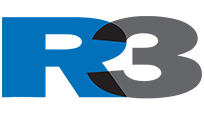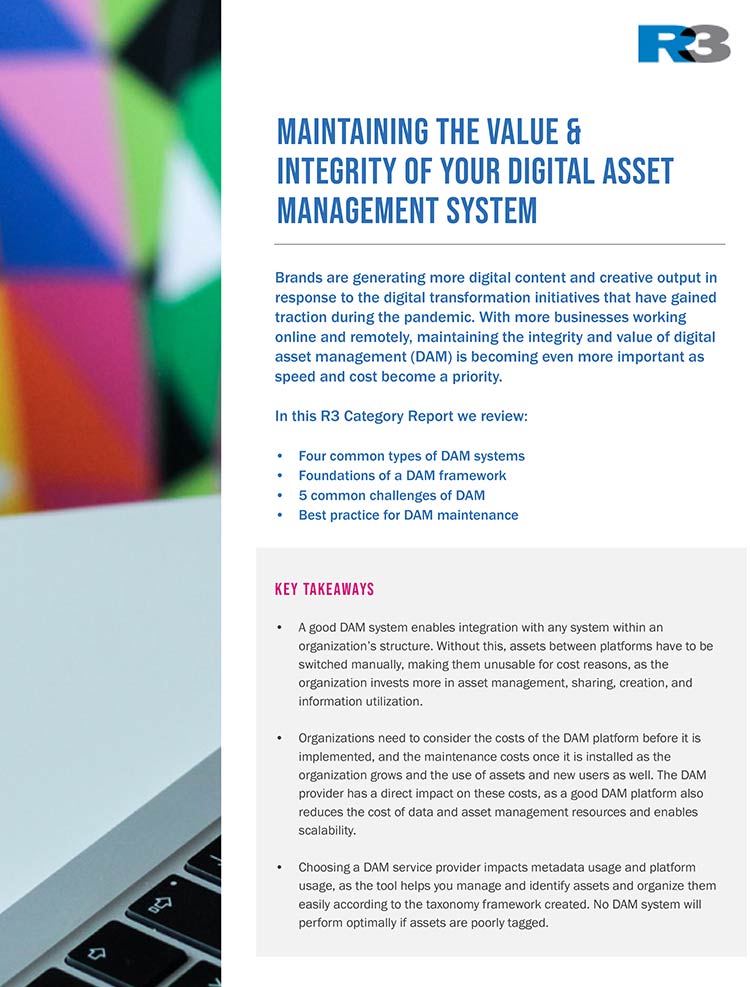Brands are generating more digital content and creative output in response to the digital transformation initiatives that have gained traction during the pandemic.
With more businesses working online and remotely, maintaining the integrity and value of digital asset management (DAM) is becoming even more important as speed and cost become a priority.
In this R3 Category Report we review:
- Four common types of DAM systems
- Foundations of a DAM framework
- 5 common challenges of DAM
- Best practice for DAM maintenance
Key Takeaways
- A good DAM system enables integration with any system within an organization’s structure. Without this, assets between platforms have to be switched manually, making them unusable for cost reasons, as the organization invests more in asset management, sharing, creation, and information utilization.
- Organizations need to consider the costs of the DAM platform before it is implemented, and the maintenance costs once it is installed as the organization grows and the use of assets and new users as well. The DAM provider has a direct impact on these costs, as a good DAM platform also reduces the cost of data and asset management resources and enables scalability.
- Choosing a DAM service provider impacts metadata usage and platform usage, as the tool helps you manage and identify assets and organize them easily according to the taxonomy framework created. No DAM system will perform optimally if assets are poorly tagged.

